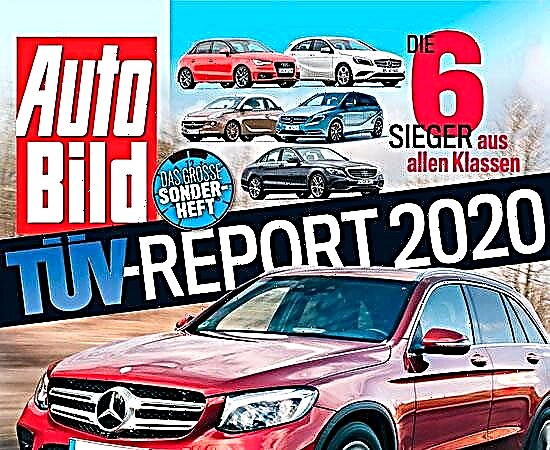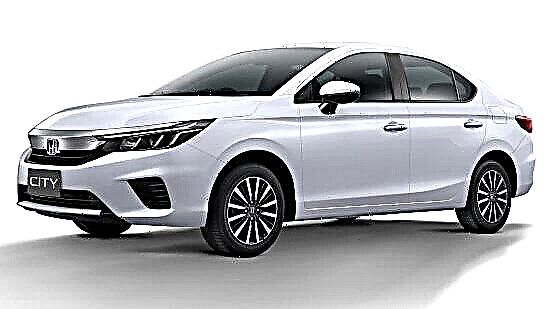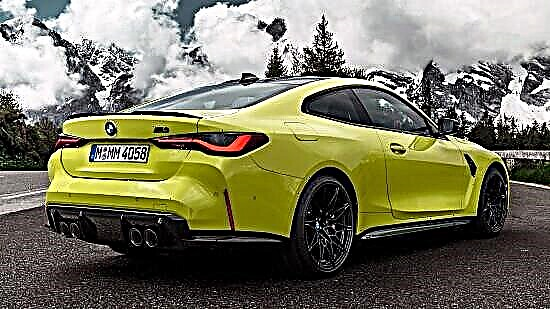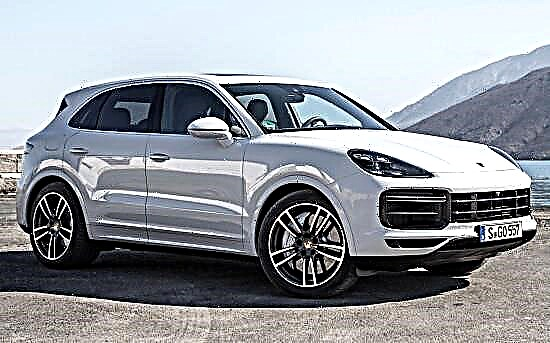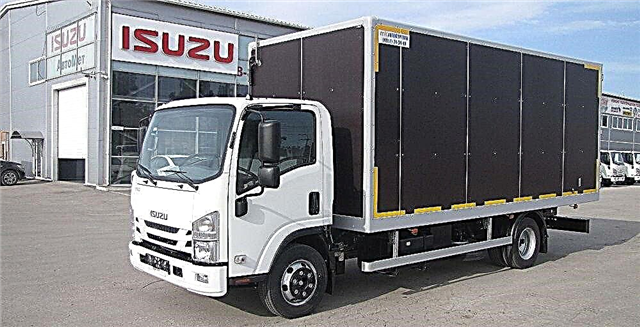Friction, or non-studded winter tires (commonly known as "Velcro") from year to year are increasing their market share, becoming the choice of more and more motorists. Therefore, the question of how effectively such tires will cope with their direct responsibilities in full road conditions is very relevant for domestic drivers. And an exhaustive answer to it can only be given by full-fledged sea trials carried out in "combat" conditions.
In general, friction tires (on their sidewalls there is a mark "studless", which means "without studs" in English) are divided into two groups:
- The first one is tires for harsh northern winters (they are also "Scandinavian"), which are intended for operation on snow and ice, because of which their tread is made of soft rubber (50-55 Shore units).
- The second one is “footwear” for warm Central European conditions (“Europeans”), which are primarily focused on wet asphalt, which is why they have not only a harder compound, but also developed grooves, which allow them to more effectively resist aquaplaning and sliding on a snow slurry ...
In Russia, "Scandinavians" are more widespread - this is due to the frosty and snowy winters in our country. As for Central European tires, they are chosen only by those car owners who do not leave the city limits in winter, but move mainly along cleaned roads that are constantly treated with chemistry.
That is why nine sets of Scandinavian tires with the standard size 225/45 R17, which are popular with golf-class car owners, were selected for the tests. First of all, the products of tire manufacturers from the "big five" manufacturers of automotive "shoes" were tested - these are Bridgestone Blizzak VRX, Goodyear UltraGrip Ice 2, Michelin X-Ice 3, Continental ContiVikingContact 6 and Pirelli Ice Zero FR (new season) ... They were accompanied by expensive Nokian Hakkapeliitta R2 tires, new Hankook Winter i * cept iZ2 and Dunlop Winter Maxx WM01 models, as well as the most affordable Toyo Observe GSi-5 of all participants, which are well known to Russian motorists.

To carry out the tests, one of the polygons was chosen, located in the northern part of the earth's hemisphere and allowing a wide range of all kinds of tests, during which the air temperature was kept within the range from –2 to –18 ºC. The tire bearer turned out to be one of the popular "C" class cars, equipped with ABS, ASR, ESP and other auxiliary electronics.
In order for the friction tires to show the most accurate results, the ice must be clean, since even a light snow or bright sun can significantly distort them. That is why, for greater accuracy of the final figures, all measurements were repeated six, or even more, times.
And the first exercise was acceleration on an icy straight from 5 to 30 km / h, where the car "shod" in Dunlop tires proved to be the best - it took only six seconds to do this. Only one tenth of a second was behind them by Nokian, while Hankook and Bridgestone were trailing behind them (they finished in 7.3 and 7.4 seconds, respectively).
As for braking from 30 to 5 km / h, here Nokian tires demonstrated themselves more efficiently than others - they only slightly exceeded 15 meters. The Continental tires were slightly worse. The outsiders were Bridgestone and Pirelli, which took 17.5 meters to slow down.
In order to assess the lateral properties, the tests continued on the ice circle, and in cloudy weather - under such conditions the results are noticeably more stable (but in any case, eight to ten circles were wound on each set of tires). And better than the rest, they "bite" into the coating of Continental tires, on which the car completed the circle in 26 seconds, and a little more than half a second was lost to them by Nokian. The slowest were Toyo tires, which gave 28.8 seconds on measurements.
Exercising in the snow is less demanding on the whims of nature, with the exception of heavy snowfall: most often fresh flakes are slippery. To assess the longitudinal grip, a long platform was used, which allowed the car to accelerate from standstill to 40 km / h, and then decelerate to 5 km / h.
Hankook and Pirelli tires accelerated faster than others on the snow, while Bridgestone and Dunlop ranked at the opposite end of the rankings. In braking, the balance of power has changed slightly: the leaders are Continental and Pirelli, while the outsiders are Goodyear, Bridgestone and Michelin. But even the last “top three” cannot be fully called a loser, since it was separated from the first results by only a 4% difference.
Unfortunately, the lack of compacted snow on the landfill did not allow the “rearrangement” to be carried out, but this gap was more than compensated for by assessing the handling on specially prepared tracks with ice and snow cover.
Not all exercises are measurable - for example, controllability and permeability can only be assessed subjectively. And the first test for all tires was the assessment of directional stability - here the leaders were Bridgestone, Goodyear, Continental, Nokian and Hankook, who distinguished themselves by stable keeping of a straight line at high speed and quick reactions to steering movements during soft changes. As for the rest, all of them, without exception, received only minor comments.
To assess handling, a track with a set of turns of various steepness was used. In this discipline, you accelerate faster and more often wield the "steering wheel" than when assessing directional stability. And the most understandable behavior in this case was demonstrated by Hankook, Toyo and Nokian tires, but on Bridgestone and Dunlop the car turned out to be the most "nervous" due to the low steering information content and delays in reactions.
The best cross-country ability was shown by Nokian and Pirelli tires - the car “shod” in them confidently starts and maneuvers in deep snow, and, if necessary, can be easily retracted (this is when it is no longer possible to move forward). But Bridgestone, Michelin, Toyo and Goodyear let us down - in snowdrifts they only allow pulling off, in case of slipping they are often "buried", and the maneuverability is not quite confident.
In assessing handling on ice, Michelin tires conquered with their perfected reactions and high reliability, and only slightly lost to them by Continental, Nokian and Pirelli. But the rest of the subjects also proved to be good, so there were no obvious outsiders in this discipline.
After completing the cycle of "winter tests" conducted at subzero temperatures, it was the turn of the asphalt exercises, during which the air warmed up to values from +4 to +7 ºC, and the first step was to evaluate the efficiency. The Hankook and Nokian are the least voracious, while the Dunlop and Toyo tires are the most consuming. But even between leaders and outsiders, the discrepancy in the results turned out to be insignificant - only 200 ml per 100 km of run.
During the warm-up lap at a speed of 110 to 130 km / h, directional stability on asphalt was evaluated. And here Michelin tires showed a clear keeping of a given course, as well as an informative effort on the steering wheel (almost like on summer tires in the warm season). Dunlop, Goodyear and Pirelli proved to be on the good side, while Hankook and Toyo had a lot of questions: they upset with uninformative "steering wheel" and a certain "braking" when adjusting the direction of travel.
To check the noise and smoothness of the ride, several tracks were used: initially the car was tested on a good surface on each set of tires, after which it “moved” to roads with potholes, cracks and cracks. The palm in this discipline went to Continental - in terms of smoothness and acoustic comfort, they found themselves "ahead of the rest." Goodyear also demonstrated low noise levels. Dunlop, Toyo and Michelin turned out to be tougher and "grumpier" than others, while Pirelli did not stand out for the best ride. They received similar remarks - vibrations on small irregularities, sharp shocks on medium and large potholes, the feeling of over-pumped tires.
The final chord in the tests was braking on dry and wet asphalt. To get the most accurate results, the exercise was carried out on one track on a narrow strip, and after each measurement the brakes were cooled. On dry surfaces (braking is carried out from 80 to 5 km / h), Goodyear tires "ran" less than others - on them the car took 28.8 meters to stop. Continental and Michelin tires showed a 1-meter loss to the leader, while Toyo trailed in the rearguard (33.1 meters).
On wet asphalt (slowing down from 60 to 5 km / h), the balance of forces was a little different: Continental tires took the first place with a result of 19.7 meters, and Goodyear was content with the second position with a half-meter lag. As for the outsider, he remained the same: Toyo's stopping distance exceeded the leader's indicators by six meters at once.
After a full cycle of tests, Continental ContiVikingContact 6 became the gold medal winners, while Nokian Hakkapeliitta R2 was awarded the silver medal with a slight lag. Both those and others showed excellent results - Continental distinguished themselves by high tenacity and excellent level of comfort, and Nokian were preferred due to fuel efficiency and understandable, predictable behavior.
"Bronze" went to Goodyear UltraGrip Ice 2 tires, which will be the best choice for operation in large cities with roads cleared of snow and ice, as they have decent grip on both dry and wet asphalt.
On the whole, good results were shown by the Pirelli Ice Zero FR, Michelin X-Ice 3 and Hankook Winter i * cept iZ2 tires, which pleased with their high directional stability on asphalt and excellent handling on ice, although they slightly disappointed with the level of comfort. In addition, the Pirelli and Hankook performed well on snowy roads, and the Hankook were also the best value for money.
The Dunlop Winter Maxx WM01 and Bridgestone Blizzak VRX were named "strong middlings", while the Toyo Observe GSi-5 tires turned out to be a budget option, both in terms of price and performance. But at the same time, Toyo demonstrated an excellent value for money ratio, second only to Hankook rubber in this indicator.
The final rating of the winter friction tires of the 2016-2017 season according to the test results:
- Continental ContiVikingContact 6;
- Nokian Hakkapeliitta R2;
- Goodyear UltraGrip Ice 2;
- Pirelli Ice Zero FR (novelty);
- Michelin X-Ice 3;
- Hankook Winter i * cept iZ² (novelty);
- Dunlop Winter Maxx WM01 (novelty);
- Bridgestone Blizzak VRX;
- Toyo Observe GSi-5.


